Common Mushrooms That Grow on Trees
- September 11, 2024
- 0 comment
Mushrooms that grow on trees are a captivating part of nature, often adding to the beauty and mystery of forests and woodlands. These fungi can be found in a variety of forms, colors, and sizes, thriving on both living and dead trees. Some are harmless, while others can cause significant damage, depending on how they interact with the tree.
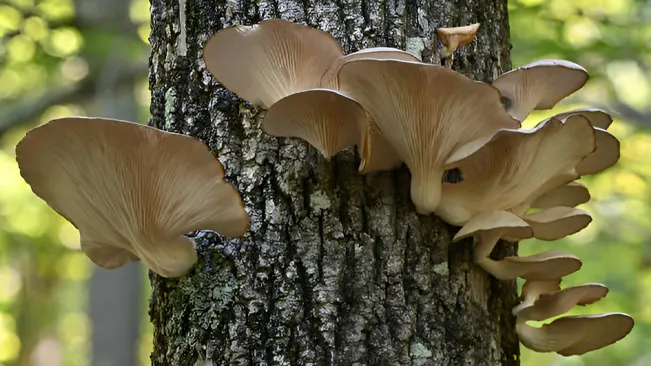
Whether parasitic or saprophytic, mushrooms play an essential role in ecosystems, breaking down organic material or sometimes signaling the decline of a tree’s health. Understanding the common types of mushrooms that grow on trees can help you recognize their presence and the potential impact they have on their hosts.
List of Common Mushrooms That Grow on Trees
- Oyster Mushrooms (Pleurotus ostreatus)
- Artist’s Conk (Ganoderma applanatum)
- Turkey Tail (Trametes versicolor)
- Honey Fungus (Armillaria spp.)
- Birch Polypore (Fomitopsis betulina)
- Chicken of the Woods (Laetiporus sulphureus)
- Beech Woodwart (Hypoxylon fragiforme)
- Shaggy Mane (Coprinus comatus)
Tree-Growing Mushrooms
Mushrooms that grow on trees can be classified broadly into three categories based on their interaction with the tree:
- Parasitic mushrooms: These fungi harm trees by feeding on their living tissues. They can cause serious damage and even death to the tree over time.
- Saprophytic mushrooms: These feed on dead or decaying wood, aiding in the decomposition process. They typically do not harm living trees but can be found on dead sections or fallen branches.
- Mycorrhizal mushrooms: These form a symbiotic relationship with trees, exchanging nutrients and helping both the tree and mushroom thrive.
Now, let’s dive deeper into some of the most common mushrooms that grow on trees.
Oyster Mushrooms (Pleurotus ostreatus)
Oyster mushrooms are some of the most well-known tree-growing fungi. They thrive on both dead and dying trees, making them saprophytic in nature. These mushrooms are typically found on hardwoods like oak, beech, and poplar.

Characteristics:
- Appearance: Oyster mushrooms have a fan-shaped cap, often white or gray, and gills that run down the stem. They resemble the shape of an oyster, hence their name.
- Habitat: They are found on dead or decaying hardwoods in temperate and subtropical forests.
- Benefits: Oyster mushrooms play an essential role in breaking down dead wood, recycling nutrients back into the soil. They are also cultivated and consumed for their nutritional value.
Impact on Trees: While they primarily grow on dead or dying wood, their presence on a living tree often indicates the tree is under stress or beginning to decay. Though not harmful to healthy trees, their growth can be a sign of other underlying issues.
Artist’s Conk (Ganoderma applanatum)
The Artist’s Conk is a type of bracket fungus known for its tough, woody texture. It’s called the “Artist’s Conk” because the white underside can be scratched or carved, leaving dark markings that resemble ink, making it a canvas for artists.

Characteristics:
- Appearance: This mushroom has a flat, wide cap that can grow up to several feet in diameter. It is usually brown on top with a white underside that darkens when scratched.
- Habitat: Artist’s Conks are typically found on both living and dead hardwoods, such as oak and maple, though they can also be found on conifers.
- Longevity: These fungi can persist for many years, growing larger each year.
Impact on Trees: Artist’s Conk is parasitic and can weaken trees by decaying their internal structure, leading to heart rot. While a tree may still appear healthy on the outside, the interior wood can become compromised, making the tree more susceptible to breakage.
Turkey Tail (Trametes versicolor)
Turkey Tail mushrooms are one of the most visually striking mushrooms due to their colorful, fan-shaped caps that resemble a turkey’s tail. They are saprophytic, growing on dead or dying trees and helping decompose the wood.

Characteristics:
- Appearance: Turkey Tail mushrooms have concentric rings of various colors, including shades of brown, orange, and blue. Their wavy, thin caps grow in clusters on decaying logs and tree stumps.
- Habitat: They can be found on a variety of hardwoods, especially in moist environments.
- Medicinal Use: Turkey Tail is widely known for its medicinal properties, particularly its immune-boosting polysaccharides.
Impact on Trees: Turkey Tail mushrooms are a sign of wood decay, but they generally only grow on dead or weakened trees. They do not harm healthy trees and are beneficial in breaking down dead wood.
Honey Fungus (Armillaria spp.)
Honey fungus, or Armillaria, is a notorious parasitic fungus that can cause serious damage to trees. It spreads through the soil by means of long black root-like structures called rhizomorphs, which can infect a tree’s roots.

Characteristics:
- Appearance: Honey fungus produces clusters of honey-colored mushrooms near the base of infected trees in the fall. The caps are typically yellow-brown, with a slightly sticky texture when fresh.
- Habitat: It infects both hardwoods and conifers, thriving in both forests and managed landscapes.
- Behavior: Armillaria can survive for many years in the soil, even after an infected tree has been removed, making it a persistent problem in some areas.
Impact on Trees: Honey fungus is one of the most destructive fungal pathogens for trees. It attacks both the roots and the lower trunk, leading to root rot, which weakens and eventually kills the tree. Its rhizomorphs can spread to nearby healthy trees, making it a widespread threat in infected areas.
Birch Polypore (Fomitopsis betulina)
As the name suggests, the birch polypore primarily grows on birch trees. It’s a saprophytic fungus, meaning it feeds on dead or decaying birch wood, and is often found on dead birch trunks or branches.

Characteristics:
- Appearance: The birch polypore has a hoof-shaped, smooth cap, typically white to pale brown. The underside is porous rather than gilled, and it has a leathery texture.
- Habitat: This fungus is found on dead or dying birch trees in temperate forests.
- Historical Use: Birch polypore has a long history of medicinal use, particularly for its anti-inflammatory and antimicrobial properties.
Impact on Trees: While it is mostly a decomposer and doesn’t attack healthy trees, the presence of birch polypore on a living birch may indicate that the tree is in decline or already dead.
Chicken of the Woods (Laetiporus sulphureus)
Chicken of the Woods is a popular edible mushroom known for its bright orange to yellow color and meaty texture. It grows in large, shelf-like clusters on both living and dead trees.
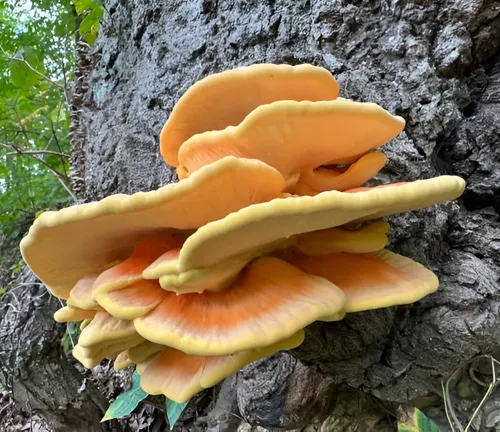
Characteristics:
- Appearance: This mushroom has a vibrant yellow to orange cap with no gills, but rather pores on its underside. Its texture is thick and fleshy.
- Habitat: Chicken of the Woods is typically found on oak trees, but it can also grow on other hardwoods such as chestnut and cherry.
- Edibility: It’s widely sought after for its chicken-like texture and flavor when cooked, but caution is advised as some people may have allergic reactions to it.
Impact on Trees: Chicken of the Woods is parasitic and can cause heart rot in living trees, weakening their structure. Infected trees may appear healthy for some time, but the decay will eventually compromise the tree’s integrity.
Beech Woodwart (Hypoxylon fragiforme)
The beech woodwart is a less commonly known fungus but is frequently found on dead or dying beech trees. It typically grows in clusters of small, round fruiting bodies.
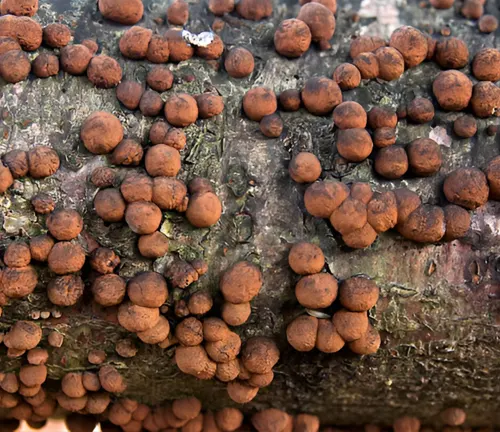
Characteristics:
- Appearance: Beech woodwart forms dark, rounded fruiting bodies that are usually red-brown in color when young, darkening as they mature.
- Habitat: It is found almost exclusively on dead or decaying beech wood in temperate forests.
- Lifecycle: This fungus helps decompose dead trees by breaking down cellulose and lignin, making it a crucial part of forest ecosystems.
Impact on Trees: Beech woodwart only grows on dead or severely decayed trees, so it is not a direct threat to healthy trees. Its presence indicates that a tree or branch has been dead for some time.
Shaggy Mane (Coprinus comatus)
Shaggy Mane mushrooms are commonly found in grassy areas near trees but can also grow directly on decaying wood. They are saprophytic, breaking down organic matter rather than living off a host tree.
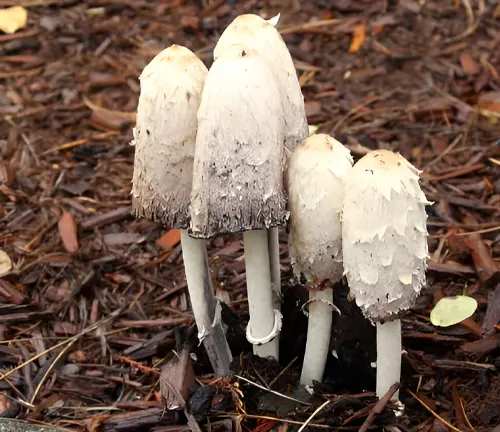
Characteristics:
- Appearance: Shaggy Manes have a tall, cylindrical cap covered in scales, which starts white but turns black and inky as the mushroom matures.
- Habitat: They are often found near decaying wood or on lawns and grassy areas in the vicinity of trees.
- Edibility: Shaggy Mane is edible when young, but it must be harvested quickly as it decomposes into a black liquid after maturing.
Impact on Trees: Since Shaggy Mane is saprophytic, it doesn’t harm living trees. It’s a sign that decaying organic matter is present, such as fallen branches or old stumps.
Conclusion
Mushrooms growing on trees can tell you a lot about the health of the tree. Saprophytic fungi are typically harmless and beneficial, playing a critical role in decomposing dead wood. Parasitic fungi, however, can be a serious threat, causing disease and decay that weaken trees over time. Recognizing these mushrooms and understanding their relationship with trees can help you manage tree health, whether in a natural forest or a managed landscape. Keep an eye out for signs of fungal growth, as it may indicate an underlying issue with the tree that needs addressing.
Frequently Asked Questions (FAQ)
- Are mushrooms on trees always harmful?
No, not all mushrooms are harmful. Many are saprophytic, meaning they feed on dead or decaying wood without damaging the tree. - Can I eat mushrooms growing on trees?
Some mushrooms, such as Oyster and Chicken of the Woods, are edible, but proper identification is essential since some tree-growing mushrooms can be toxic. - What should I do if I see mushrooms growing on a tree?
The action depends on the type of mushroom. If it’s a parasitic fungus like Honey Fungus, it may indicate a serious issue, and consulting an arborist is recommended. - Can mushrooms kill a tree?
Yes, certain parasitic mushrooms, such as Armillaria (Honey Fungus), can cause root rot and structural damage that may eventually kill a tree. - Is Turkey Tail good for trees?
Turkey Tail mushrooms are saprophytic decomposers, meaning they grow on dead wood. They don’t harm living trees but play an important role in recycling nutrients. - Why do mushrooms grow on dead trees?
Mushrooms feed on decaying organic material, breaking it down and returning essential nutrients to the soil, which is why they’re often found on dead trees. - How can I tell if a mushroom on a tree is harmful?
Harmful mushrooms are often parasitic and cause damage to the tree’s structure. Consulting an expert or arborist can help identify whether the mushroom poses a risk. - Do mushrooms only grow on dead trees?
Not always. Some mushrooms, especially parasitic species, can grow on living trees, causing disease and decay over time. - Are tree mushrooms a sign of poor tree health?
In some cases, yes. Parasitic mushrooms like Honey Fungus can indicate that a tree is stressed or in decline, while saprophytic mushrooms generally grow on already dead wood. - Can removing mushrooms save a tree?
Removing mushrooms won’t address the underlying fungal infection. It’s important to treat the root cause, and in some cases, professional tree care or removal may be necessary.

Jordan Blake
Forestry AuthorJordan Blake is a forestry expert with over 15 years of experience in arboriculture and community education. Passionate about sustainable forest management, Jordan regularly writes for Forestry.com and Tree Care Magazine. Holding certifications in tree health assessments and urban forestry management, Jordan conducts workshops to educate the public on sustainable practices. Jordan has a degree in Environmental Science and enjoys hiking and photography in their free time.

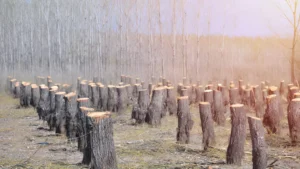

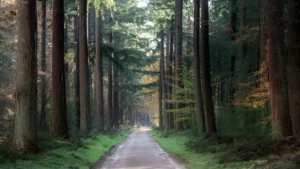
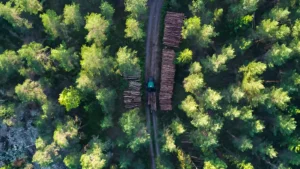


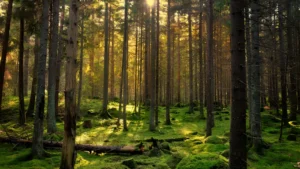
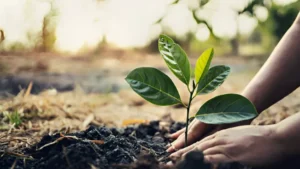

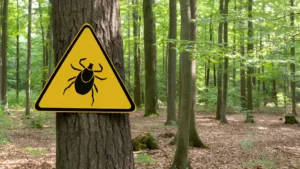
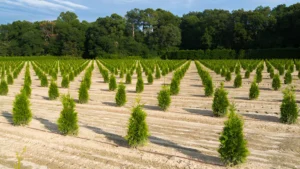

Leave your comment